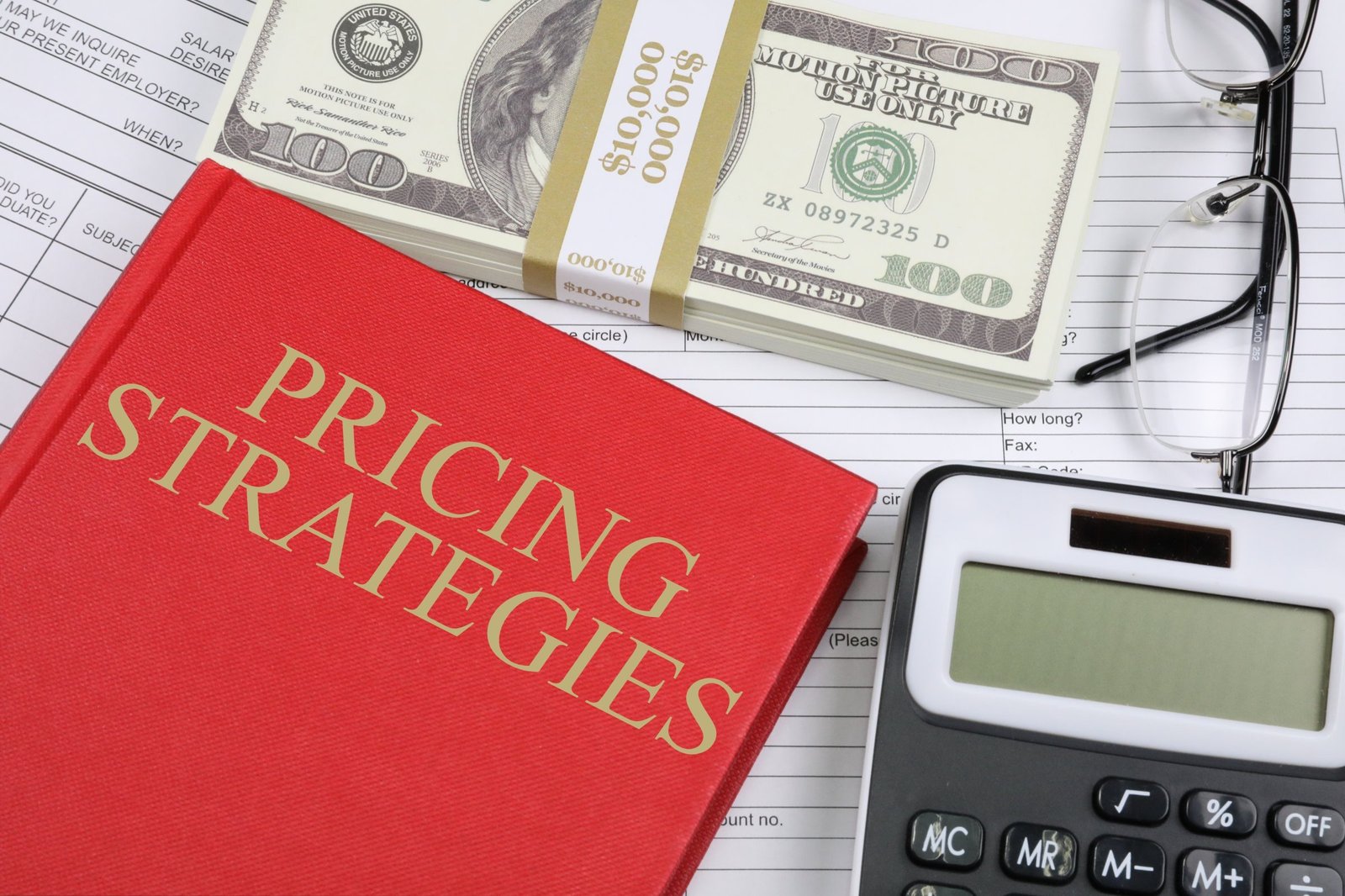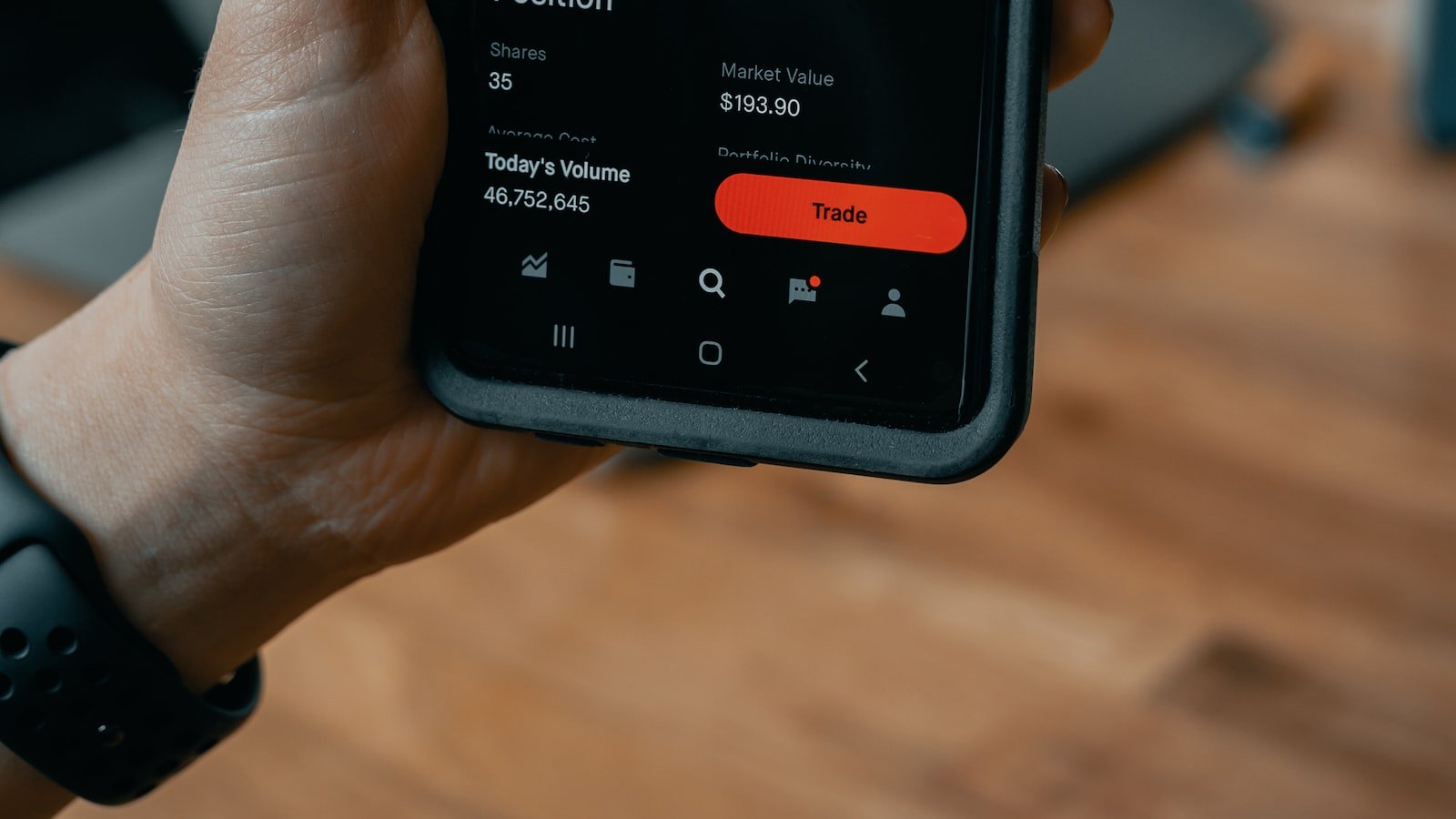Fireworks light up the night sky, captivating us with their dazzling colors and breathtaking displays. There is an undeniable magic in the way each explosion mesmerizes us, leaving us in awe of its beauty. It may seem unrelated, but the artistry behind pyrotechnics shares a surprising resemblance to the intricate science of optimal product pricing. In our quest to unravel the enigma of pricing strategies, we delve into a world where numbers dance harmoniously with consumer psychology, aiming to illuminate a path leading to commercial success. Welcome to the realm of “Price Pyrotechnics: Illuminating Strategies for Optimal Product Pricing,” where we explore the explosive spark that ignites profitability and captivates customers.
Table of Contents
- Understanding the Consumer Behavioral Patterns in Product Pricing
- Effective Pricing Strategies: Balancing Profit Margins and Competitive Edge
- Dynamic Pricing Models: Unveiling the Power of Personalization
- Leveraging Data Analytics for Pricing Optimization
- Q&A
- To Conclude

Understanding the Consumer Behavioral Patterns in Product Pricing
Identifying Consumer Behavioral Patterns
Understanding the complex and ever-changing consumer behavioral patterns is crucial for businesses to set optimal product prices. By gaining insights into how consumers perceive, evaluate, and make purchasing decisions, companies can develop effective pricing strategies that generate maximum revenue. Here are some key factors to consider:
- Price Sensitivity: Consumers’ reactions to pricing can vary based on their perceived value of the product. Some individuals are price sensitive and are more likely to switch to a competitor offering a lower price, while others prioritize quality or convenience over cost. Identifying your target audience’s price sensitivity is essential for determining the right pricing strategy.
- Reference Pricing: Consumers often reference past prices or compare prices across similar products to perceive the value of an item. For example, a clothing retailer might display a high original price next to a sale price, creating a perception of a great deal. Similarly, setting the price of a new product close to an established competitor’s price can convey a sense of comparable value.
- Psychological Pricing: Many consumers make purchasing decisions based on emotions and psychological cues. Strategies like setting prices just below a round number (e.g., $9.99 instead of $10) or offering pricing tiers (e.g., basic, premium, and deluxe) can influence consumer behavior by creating an illusion of affordability or exclusivity.
Consumer Buying Motivations and Price Elasticity
Further understanding consumer buying motivations and price elasticity aids in determining the optimal pricing for your products. Here are additional factors to bear in mind:
- Income Levels: Consumers with higher incomes may exhibit different purchasing behaviors and be less sensitive to price fluctuations compared to those with lower incomes. Segmenting your target market based on income levels can help tailor pricing strategies for different consumer groups.
- Product Differentiation: If your product offers unique features or benefits not easily found elsewhere, consumers may be willing to pay a premium price. However, in highly competitive markets where products are perceived as similar, pricing flexibility becomes increasingly important to capture market share.
- Time Sensitivity: Some consumers are motivated by time-related factors, such as urgency or impatience. By applying time-based pricing strategies, such as limited-time discounts or flash sales, businesses can tap into this consumer behavior and expedite purchase decisions.
By comprehending consumer behavioral patterns and motivations, businesses can align their pricing strategies to optimize sales while meeting customer expectations. Remember, consumer behaviors may evolve over time, so regularly revisiting and evaluating pricing strategies is crucial to stay ahead in today’s dynamic market.

Effective Pricing Strategies: Balancing Profit Margins and Competitive Edge
The world of pricing strategies can be a dazzling display of possibilities, where profits and market share collide in a symphony of numbers. In this post, we’ll uncover the secrets behind effective pricing strategies that strike the delicate balance between maximizing profit margins and gaining a competitive edge. Prepare to be illuminated with a dazzling array of price pyrotechnics!
1. Understand your costs: The first step in setting an effective price is to have a clear understanding of your costs. Consider both direct costs (materials, labor) and indirect costs (overhead, marketing). By having a comprehensive grasp of your expenses, you can ensure that your prices cover your costs while still leaving room for profit.
2. Analyze the market: To stand out in a crowded marketplace, it’s crucial to have a thorough understanding of your competitors and their pricing strategies. Conduct market research to identify the price points at which your target customers are comfortable. Consider factors such as the perceived value of your product, customer demand, and market trends. By aligning your prices with market expectations, you can strike the perfect balance between attracting customers and maintaining profitability.
Real-world example: One notable example is Apple. Despite having higher production costs than many of its competitors, Apple positions its products with premium pricing. Consumers perceive Apple products as high-quality and innovative, which justifies the higher prices. This strategic approach has allowed Apple to maintain a strong competitive edge while maximizing profits.
3. Offer pricing tiers: To cater to a diverse range of customers, consider implementing a tiered pricing structure. This can involve offering different packages or versions of your product at varying price points, each with different features or levels of service. By providing options, you can cater to both budget-conscious customers and those seeking additional value. This not only boosts your competitive advantage but also encourages customers to upgrade to higher-priced options, increasing your overall profit margins.
4. Utilize psychological pricing: The way you present your prices can have a significant impact on consumer behavior. Experiment with pricing strategies like charm pricing (ending prices with 9 or 5) or decoy pricing (introducing a higher-priced option to make others seem more reasonable). These tactics can tap into customers’ psychological tendencies and influence their perception of value. For example, a study found that reducing the price of a bread maker from $275 to $249 led to a significant increase in sales, as customers perceived it as being priced under $250, even though the actual reduction was only $26.
In the world of pricing, it’s essential to find the perfect balance between profit margins and gaining a competitive edge. By understanding your costs, thoroughly analyzing the market, offering pricing tiers, and utilizing psychological pricing, you can create a powerful pricing strategy that sets your business on a path to success. So go ahead, ignite the fireworks of optimal product pricing!
Dynamic Pricing Models: Unveiling the Power of Personalization
When it comes to pricing products and services, the traditional one-size-fits-all approach often falls short in meeting the diverse needs and preferences of today’s consumers. That’s where dynamic pricing models step in, wielding the power of personalization to unleash a world of strategic possibilities. In this post, we’ll dive into the depths of price pyrotechnics, illuminating the strategies that can help businesses optimize their product pricing.
1. Segmentation: By dividing customers into specific groups based on factors like demographics, purchasing behavior, or preferences, businesses can tailor prices to meet individual needs. For example, airlines employ dynamic pricing by segmenting customers into different fare classes based on factors such as booking time, cabin class, and flexibility. This allows them to maximize revenue by charging premium prices to business travelers while offering discounted fares to budget-conscious leisure passengers.
2. Time-based Pricing: A dynamic pricing strategy that takes into account the time of purchase can be highly effective. For instance, ride-hailing platforms like Uber and Lyft adjust their prices based on demand and supply conditions at a given time, leading to surge pricing during peak hours. By systematically adapting prices to match supply and demand fluctuations, these companies can strike a balance that ensures profitability while keeping customers engaged.

Leveraging Data Analytics for Pricing Optimization
In today’s highly competitive market, pricing optimization plays a critical role in determining the success or failure of a product. The process of setting the right price for a product can be complex and challenging, but with the help of data analytics, businesses can make informed decisions to maximize their profitability.
Data analytics allows businesses to analyze vast amounts of data to uncover valuable insights that can be used to optimize product pricing strategies. By leveraging advanced algorithms and statistical models, businesses can identify patterns and trends in consumer behavior, market dynamics, and competitor pricing. This enables them to understand the optimum price points that will attract customers while ensuring maximum revenue.
Here are some key ways in which data analytics can be leveraged for pricing optimization:
1. Demand forecasting: By analyzing historical sales data and external factors such as seasonality, promotions, and market trends, businesses can predict future demand for their products. This information helps in determining the optimal pricing strategy to maximize sales and profitability.
2. Dynamic pricing: Data analytics enables businesses to implement dynamic pricing strategies, where prices are adjusted in real-time based on market conditions and customer behavior. For example, airlines use dynamic pricing to adjust ticket prices based on factors such as demand, time of booking, and competitor pricing.
3. Price elasticity analysis: Data analytics allows businesses to measure price elasticity, which is the sensitivity of customers to changes in price. By quantifying price elasticity, businesses can determine how price changes will impact product demand and adjust their pricing strategy accordingly.
4. Competitor analysis: By analyzing competitor pricing data, businesses can identify opportunities for price differentiation. This helps in positioning their products strategically in the market and gaining a competitive edge.
Data analytics has revolutionized pricing optimization by providing businesses with valuable insights and tools to make informed pricing decisions. By harnessing the power of data, businesses can unlock new avenues for growth and profitability, ensuring their products shine in a crowded marketplace.
Q&A
Q: What are “Price Pyrotechnics: Illuminating Strategies for Optimal Product Pricing”?
A: “Price Pyrotechnics: Illuminating Strategies for Optimal Product Pricing” is an insightful article that explores various innovative and strategic approaches to pricing products in a way that maximizes profitability and market positioning.
Q: Why is optimal product pricing important for businesses?
A: Optimal product pricing is crucial for businesses as it directly impacts their profitability and competitiveness. Implementing effective pricing strategies can ensure that a product’s value is accurately reflected, attract the right customer base, and ultimately contribute to long-term success.
Q: How can businesses determine the optimal price for their products?
A: Determining the optimal price involves a comprehensive understanding of the market, competition, and customer behavior. Businesses can employ strategies such as cost-based pricing, value-based pricing, price skimming, or penetration pricing, depending on their objectives and target market.
Q: What is cost-based pricing, and how can it be utilized effectively?
A: Cost-based pricing involves setting the price based on the production cost of the product, including raw materials, labor, and overhead expenses. While it serves as a fundamental pricing model, businesses need to consider external factors like market demand and competitor pricing to ensure viability and profitability.
Q: Can you explain the concept of value-based pricing?
A: Value-based pricing revolves around determining the worth of a product to customers. By focusing on the perceived value and benefits a product provides, businesses can set prices accordingly. This strategy often requires in-depth market research, understanding customer preferences, and effectively communicating the unique value proposition.
Q: How does price skimming work, and when should it be employed?
A: Price skimming involves initially setting a high price for a product during its introduction phase and gradually lowering it over time. This strategy is typically used for innovative or exclusive products where a higher price can be justified by early adopters. Price skimming aims to maximize profits from the initial demand before the market becomes more competitive.
Q: In what instances would penetration pricing be an effective strategy?
A: Penetration pricing focuses on setting a lower price than competitors to gain quick market share or attract price-sensitive customers. This strategy is often used when introducing a new product to penetrate the market swiftly or when trying to regain market share. However, businesses should carefully consider long-term profitability and the potential impact on brand positioning.
Q: Are there any other pricing strategies mentioned in the article?
A: Absolutely! The article delves into various other pricing strategies, including psychological pricing, bundle pricing, and dynamic pricing. These strategies explore the impact of psychological effects, packaging products together, and adjusting prices in real-time based on factors such as demand, competition, or customer behavior.
Q: How important is ongoing pricing analysis and adaptation for businesses?
A: Ongoing pricing analysis and adaptation are critical for businesses to stay competitive. Market trends, customer preferences, and competition constantly evolve, meaning pricing strategies must be regularly revised and adjusted to ensure optimal results. Regular analysis of pricing performance enables businesses to make informed decisions and stay ahead in a dynamic market.
Q: What key takeaways can readers expect from this article?
A: Readers can expect to gain valuable insights into various effective pricing strategies and the importance of selecting the right approach for their specific product and market dynamics. The article aims to inspire businesses to explore innovative pricing tactics, adapt their strategies when necessary, and ultimately enhance their overall profitability and market position.
To Conclude
As we bid adieu to this illuminating journey into the world of product pricing, it becomes evident that price pyrotechnics hold the key to unlocking immense potential within any business. Like a dazzling firework display, a well-crafted pricing strategy can capture attention, ignite desire, and propel your products to the forefront of the market.
Throughout this article, we have ventured into uncharted territories, uncovering the secrets to optimal product pricing. We sailed through the treacherous waters of customer psychology, embracing the art of perception and striking a harmonious balance between value and cost. We witnessed the explosive synergy between data-driven analysis and intuitive decision-making, a symphony in which profits flourish.
It is our hope that by delving into the delicacies of pricing dynamics, you have gained valuable insights, like delightful sparks illuminating your path to success. From employing dynamic pricing to enchanting customers with irresistible offers, these strategies light up the way towards a prosperous future.
However, dear reader, always remember that this journey doesn’t end here. In the ever-shifting landscape of commerce, new pricing techniques emerge, ready to set the stage ablaze. Continual adaptation, awareness of market trends, and a touch of innovative thinking will ensure that your pricing endeavors never fade into obscurity.
As our final curtain call approaches, we encourage you to seize the power of price pyrotechnics, harness its energy, and set your products ablaze with success. May your pricing strategies continue to ignite curiosity, illuminate your business, and leave a lasting impression, captivating both hearts and minds.
So, go forth and dazzle the world with your price pyrotechnics, for in this realm of business, the darkest nights are transformed into the brightest of fireworks. With each spark, you have the power to create a spectacle that resonates, leaving an indelible mark on the minds of your customers. Remember, the sky is your canvas, and it is time to paint it with brilliance.

